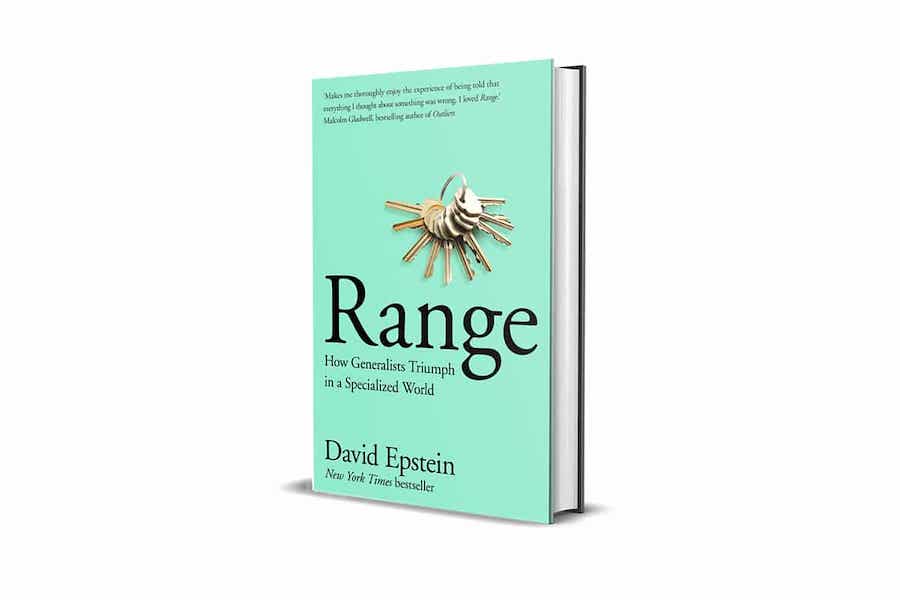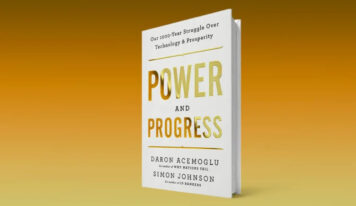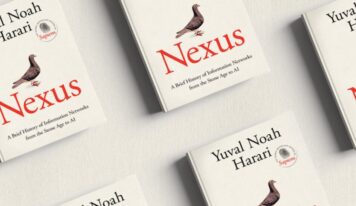Accumulating different experiences, trying new things, and proactively sacrificing a minimum of depth can benefit long-term career development
Central Ideas:
1 – Christopher Conolly’s main finding was that early in their careers, those who later made successful transitions had broader training and kept several “career streams” open, even when pursuing their primary specialty.
2 – The distribution of effort across different instruments seems important. The children identified as exceptional by the school turned out to be those who distributed their efforts equally across three instruments. The least qualified students spent more time on the first instrument.
3 – The external view is deeply counterintuitive because it requires the decision-maker to ignore the unique surface characteristics of the project in question, in which they are an expert, and to look for structurally similar analogies elsewhere.
4 – In one piece of research, individual developers started out with a low innovation rate relative to teams – they were less likely to produce success – but as their experience broadened, they outperformed teams.
5 – Werner von Braun, famous for developing the moon mission rocket, based NASA’s rigid process on a culture that encouraged disagreement. He created the Monday Notes, where each engineer would submit questions every week in a one-page report. After he annotated the report, it was circulated to all areas.
About the author:
David Epstein holds a master’s degree in environmental science and journalism from Columbia University. He works as an investigative reporter for several U.S. media outlets and writes a science column for Sports Illustrated magazine.

Introduction
In 2016, Tiger Woods and Roger Federer met, when both were at the peak of their careers. Tiger flew in on his private jet to watch the US Open final. This made Federer incredibly nervous. Nevertheless, he won for the third year in a row. Woods joined him in the locker room for a champagne party. They connected as only the two of them could. “I’ve never talked to anyone who was so familiar with the feeling of being invincible,” Federer would later describe. They soon became friends, as well as hotbeds of debate over who was the top man in the world.
It seems rather unusual that a child with “careless” parents who started playing without taking the sport very seriously has grown into a man who has mastered the sport like no other. Unlike Tiger, thousands of children, at least, had an early advantage over Roger. Tiger’s incredible education features prominently in a series of best-selling books on developing expertise, one of which was a manual aimed at parents written by Earl, his father. The boy was not just playing golf. He was engaging in “deliberate practice,” the only kind that counts in the now ubiquitous 10,000-hour rule. The “rule” represents the idea that the number of accumulated hours of highly specialized training is the only factor in skill development, whatever the field.
The pressure to focus early and narrowly extends well beyond sports. We often learn that the more competitive and complicated the world gets, the more specialized we must become (and the earlier we must start) to navigate it. Our best-known icons of success gain projection by their precociousness and early advantage – Mozart, on the keys; Facebook CEO Mark Zuckerberg, on another kind of keyboard. The response, in all fields, to a voluminous library of human knowledge and an interconnected world has been to exalt increasingly precise focus.
In 2014, I included some of the findings of late specialization in sports in the afterword to my first book, The Genetics of Sport. The following year, I received an invitation from an unlikely audience to speak about this research-not athletes and coaches, but veteran military personnel. I examined scientific journals for work on specialization and career change outside the sports world in preparation. I was impressed by what I found. One study showed that early specialists jumped to the most lucrative position after college, but that late specialists made up for the early advantage of others by finding a job that better fit their skills and personalities. I found several studies that show how tech inventors increased their creative impact by accumulating experience in different domains, compared to peers, who delved more deeply into one; they benefited from proactively sacrificing minimal depth for breadth as their careers progressed.
1 – The cult of the initial advantage
A few years after Kasparov’s experiments with computers, the first “freestyle chess” tournament was held. Teams could be made up of several humans and computers. The advantage of a specialized practice life that had been diluted in advanced chess was eliminated in freestyle. A pair of amateur players with three normal computers not only destroyed Hydra, the best chess computer but also crushed teams of grandmasters using computers. Kasparov concluded that the humans on the winning team were the best at “training” multiple computers on what to examine and then synthesizing that information into an overall strategy. Combined human/computer teams – known as “centaurs” – were playing the highest level of chess ever seen. If Deep Blue’s victory over Kasparov signaled the transfer of chess power from humans to computers, the centaurs’ victory over Hydra symbolized something even more interesting – humans empowered to do what they do best without the prerequisite of years of expert pattern recognition.
The key finding of Christopher Conolly, a psychology consultant, was that early in their careers, those who later made successful transitions had broader training and kept several “career streams” open, even when pursuing a primary specialty. They “traveled on an eight-lane highway,” he wrote, rather than falling into a one-way street with only one lane. They had breadth. Those who were successful at adaptation were excellent at taking knowledge from one activity and applying it creatively to another, avoiding cognitive entrenchment. They employed what Hogarth called a “circuit breaker.” They used external experiences and analogies to interrupt their inclination to adapt a previous solution that might no longer work. Their skill was in avoiding the same old patterns.

2 – How the perverse world was created
The Flynn effect – the increase in correct IQ test answers with each new generation in the 20th century – has been documented in over thirty countries. The advances are staggering: three points every ten years. To put this in perspective, if an adult who was average today were compared to adults a century ago, he would be in the 98th percentile.
Research with thousands of adults in six industrialized countries found that exposure to modern work with self-directed problem solving and non-repetitive challenges was correlated with being “cognitively flexible.” As Flynn is keen to point out, this doesn’t mean that brains now have more inherent potential than they did a generation earlier, but that utilitarian glasses have been exchanged for glasses that sort the world using concepts. Even recently, within some very traditional or orthodox communities that have modernized but still prevent women from engaging in modern jobs, the Flynn effect has occurred more slowly for them than for men in the same community. Exposure to the modern world has left us better adapted to complexities, and this has manifested itself as flexibility, with profound implications for the breadth of our intellectual world.
Flynn’s great disappointment is the degree to which society, and especially higher education, has responded to the broadening of the mind by pushing for specialization, rather than focusing initial training on conceptual and transferable knowledge.
Flynn conducted a study in which he compared the average grades of veteran students at a major state university in the United States, from Neuroscience to Letters, according to their performance on a critical thinking test.
The test measured students’ ability to apply fundamental abstract concepts from economics, social sciences, physics, and logic to common real-world scenarios. Flynn was puzzled to discover that the correlation between the broad conceptual thinking test and the grades was nearly zero. In Flynn’s words, “the characteristics that mean good grades [at university] do not include the critical ability of any broad meaning.

3 – When less of the same is more
Vivaldi’s creativity was facilitated by a special group of musicians who could quickly learn new music on an impressive variety of instruments. They attracted emperors, kings, princes, cardinals, and earls from all over Europe who were regaled with the most innovative music of the time. It was an all-female cast known as the figlie del Coro, literally, “daughters of the choir.” Leisure activities such as horseback riding and outdoor sports were infrequent in the floating city, so music was the main entertainment of its citizens. The sounds of violins, flutes, horns, and voices spilled into the night from every boat and gondola. And in a time and place boiling with music, the figlie dominated for a century.
The best figlie became European celebrities, like Anna Maria Della Pietà. A German baron categorically declared her “the best violinist in Europe.” Rousseau wanted very much to see them. He pestered a patron of the Ospedale non-stop until the latter took him to meet the female musicians. The patron introduced the women, the prodigious sirens whose fame had spread like wildfire across Europe – and Rousseau was shocked. There was Sophia – “horrible,” Rousseau wrote. Cattina – “she had only one eye.” Bettina – “smallpox had completely disfigured her”. “Almost all of them had some striking defect,” according to Rousseau.
The girls and women who caused delight to delicate ears did not have delicate lives. Most of their mothers had worked in Venice’s vibrant sex industry and contracted syphilis before giving birth, so the girls had been abandoned at the Ospedaledella Pietà, a kind of Holy House of Mercy, where the girls grew up and learned music.
As the ospedali had instruments, music was included in the education of dozens of girls. So they could play during religious ceremonies in the adjacent churches. The directors of the Ospedali noticed that there were more people in the churches and that the donations to the institution increased in proportion to the quality of the girls’ music.
The ospedali commissioned original works from composers. In six years, Vivaldi wrote 140 concertos exclusively for the Pietà’s female musicians. A teaching system was set up in which the older figlie taught the younger ones, and the younger ones taught the beginners.
The musical program of the Pietà was not famous for its rigor. According to a list of the Pietà’s directors, normal lessons took place on Tuesdays, Thursdays, and Saturdays. The figlie were free to rehearse whenever they wanted. At the beginning of the success of the figlie del Coro, work and chores took up most of their time. So they were only allowed to study music for an hour.
However, the distribution of effort on different instruments seems important. The children identified as exceptional [by the school] turned out to be those who distributed their efforts more evenly across three instruments,” added the research psychologists. The least skilled students tended to devote more time to the first instrument they came into contact with as if they could not give up a perceived initial advantage. Exceptional students developed more like figlie del coro. “The modest investment in a third instrument paid off for the exceptional children,” the scientists concluded.
4 – Fast and slow learning
Despite the teacher’s clever tirades, it is clear that the students do not understand how these numbers and letters [algebra] can be useful anywhere beyond the school test. When she asks where variable expressions can be used in the world, someone replies, “When you are trying to solve math problems.” Still, students figure out how to get to the right answers in their notebooks: by questioning the teacher.
In the United States, about one-fifth of the questions proposed to students began as a “making connections” problem. But when they stopped asking the teacher for hints and solved the problems, none of them remained in the “making connections” category. This type of problem did not survive the teacher-student interactions.
As in golf, procedural practice is important in mathematics. But when it constitutes the entire training strategy in mathematics, it is a problem. “Students do not see mathematics as a system,” wrote Lindsey Richland and her colleagues. They see it only as a set of procedures. In the same way that when the student was asked how variable expressions connected to the world, she answered that they were good for answering math questions.
Kornell was explaining the concept of “desirable difficulties,” obstacles that make learning more challenging, slower, and more frustrating in the short term, but better in the long term. Excessive cues, such as those in eighth-grade math class, do the opposite; they strengthen immediate performance but hurt long-term progress. Several desirable difficulties that can be used in the classroom are among the most rigorous methods of improving learning, and the diligent eighth-grade math teacher accidentally subverted all of them with a well-intentioned interest in immediately noticeable progress.

5 – Thinking beyond experience
In an era when alchemy was still a common method of analyzing natural phenomena, Kepler filled the universe with invisible forces acting everywhere and helped usher in the Scientific Revolution. His exhaustive documentation of every circuitous path his thought took is one of the great records of a mind undergoing a creative transformation. It would be a redundancy to say that Kepler thought outside the box. But what he did, whenever he found himself at a dead-end, was to think completely beyond the domain in question. He left a vividly illuminated path with his favorite tools for doing so, those that allowed him to look outside and beyond the wisdom that his peers merely accepted. “I love, in particular, analogies,” he wrote. “They are my favorite teachers, knowers of all the secrets of nature…Everyone should make vast use of them.”
“In my opinion, our ability to think relationally is one of the reasons we dominate the planet,” said Dedre Gentner, a scholar of analogical thinking and Kepler. Analogical thinking turns the new into something familiar, or takes something familiar and puts it in a new light, allowing human beings to reason about problems never encountered and in unfamiliar contexts.
Our natural inclination to follow the internal view can be overcome by resorting to analogies from the “external view”. This looks for deep structural similarities with the problem at hand in different problems. The external view is profoundly counterintuitive, for it requires the decision-maker to ignore the unique superficial characteristics of the project at hand, in which he is an expert, and to look for structurally similar analogies elsewhere. It requires the mental attitude to shift from narrow to broad.
6 – The problem of excessive grasp
Van Gogh’s brothers suggested he try carpentry or look for jobs as a barber. His sister thought he would make a great baker. He was an insatiable reader. So, perhaps, he could be a librarian. But from the depths of his despair, he turned his fierce energy to the last thing he imagined he would be able to start immediately. His next letter to his brother was very short: “I am writing to you as I draw and am hurrying to get back to work. Previously, that man saw drawing as a distraction from his goal of reaching people with the truth. At that moment, he began to seek the truth by portraying the lives around him in drawings. He had stopped drawing freehand as a child when he realized that he was a terrible draftsman. So he started right at the beginning, reading a Guide to the ABCs of Drawing.
One day he carried an easel and oil paints, with which he had almost no experience, up a dune during a storm. He ran in and out of the shelter, throwing and scattering paint on the canvas with brush strokes, in between gusts of wind that splashed the painting with grains of sand. He squeezed the paints straight from the tube onto the canvas when necessary. The viscous oil paint and the speed necessary to apply it under the storm freed his imagination and his hand from the deficiencies that had beset him when he sought perfect realism. More than a century later, his biographer would write that, that day, “[he] made a surprising discovery: he could paint. And he realized this: “I found it immensely pleasurable,” he wrote to his brother.
Several artists, like Van Gogh, seem to have excelled despite their late starts. It would be easy to pick out stories of exceptional late development as overcoming obstacles. But they are not exceptions because of their late starts, and these late starts did not diminish their likelihood of success. The late beginnings were part of their ultimate success.
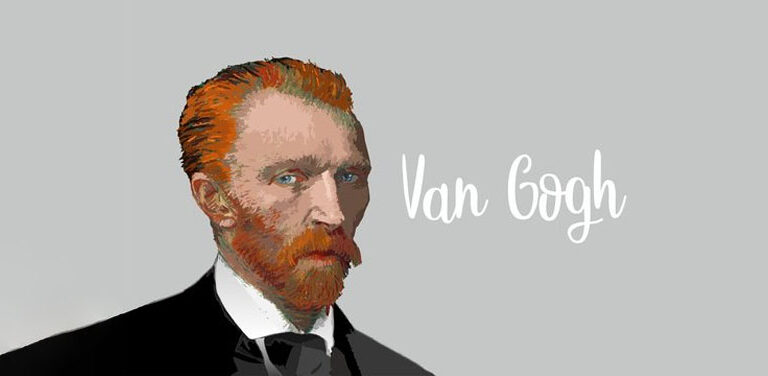
7 – Flirting with your possible selves
Diversity was great, Frances Hesselbein was told, but that was too much, too soon. You had to fix the organizational problems before you could worry about diversity. But Hesselbein had decided that diversity was the main organizational problem in her institution. So he went even further. He assembled a leadership team that represented his target audience and modernized everything from the mission statement to the merit badges. Now there would be divisions for mathematics and computing. Hesselbein made the agonizing decision to sell camps that volunteers and staff had loved since their youth but were no longer used.
Thanks to YouTube, the “marshmallow test” may be the world’s most famous science experiment. It was a series of experiments that started in the1960s. The original premise was simple: an examiner places a marshmallow (or a cookie or a pretzel) in front of a child in kindergarten. Before leaving the room, the examiner tells the child that if he can wait until he returns, he will win that marshmallow and one more. If the child cannot wait, he can eat the marshmallow in front of him. The child is not told how long the wait will last (fifteen to twenty minutes, depending on age). So he should only resist if he wants the maximum reward.
Psychologist Walter Mishel and his research team followed up with the children years later and found that those who had managed to resist longer were more likely to be successful socially, academically, and financially, and were less likely to become drug users.
The advice of Herminia Ibarra, professor of organizational behavior, is almost identical to the short-term planning recorded by the Dark Horse researchers. Instead of expecting an armored first answer to the question “Who do I want to be?” her work indicated that it is better to be a scientist of oneself, asking smaller questions that can be tested: “Which of my various possible selves should I start exploring now? How can I do that?”. Flirt with your possible selves. Instead of a grand plan, find experiments that can be done quickly. “Test and learn,” Ibarra said. “Don’t plan and implement.”
8 – The outsider’s advantage
Called InnoCentive, the company is a facilitator for companies in any field, acting as a “tracker” and getting paid to post “challenges” and rewards for unconventional “solvers.” Just over a third of the challenges have been completely solved, a remarkable portion, since InnoCentive was selected to find solutions to problems that frustrated the experts who posted them. Along the way, InnoCentive realized that it could help clients tailor their posts to make the solution more likely. The trick: structure the challenge in such a way that it would become appealing to a diverse range of problem solvers. The more appealing the challenge was not only to scientists, but also to lawyers, dentists, and mechanics, the more likely it was to be solved.
Bingham calls this “unconventional” thinking: finding solutions in experiences far beyond the trained, problem-driven professional himself. History is full of examples that changed the world.
NASA was unable to predict solar particle storms, the radioactive material expelled by the Sun that can seriously harm astronauts and the equipment, on which they depend. Expert physicists were understandably skeptical that outside amateurs could help, but after three decades of grappling with the problem, they had nothing to lose, and in 2009 NASA publicized the issue through InnoCentive. In six months, Bruce Cragin, a retired Sprint Nextel engineer, and resident of rural New Hampshire, solved the problem using radio waves picked up by telescopes.
The more information the experts generate, the more opportunities there are for curious dilettantes to contribute by merging the strands of widely available but disparate data – undisclosed public knowledge, as Don Swanson called it. The larger and more easily accessible the library of human knowledge is, the greater the chances that customers who have demands will make connections at the forefront of research. A company like InnoCentive, which at first glance seems counterintuitive, should become even more fruitful as specialization accelerates.

9 – Lateral thinking with obsolete technology
In the early 1970s, radio-controlled toy cars were popular, but toys with the technology that needed to be operated by remote control could cost up to a month’s salary. So it was a hobby reserved for adults. As he always did, Yokoi pondered a way to democratize remote control carts. Thus, he took technology into the past. The expense was due to the need for multiple radio control channels. The cars started with two channels, one to control the motor output and one for the steering wheel. The more functions the toy had, the more channels were needed. Yokoi reduced the technology to the absolute minimum, a car operated by a single channel remote control that could only turn left. Product name: Lefty RX. It cost less than a tenth of the value of any remote control toy, and was amazing for counterclockwise racing, even when it needed to face obstacles because children easily learned to dodge problems.
In one survey, individual creators started with a low innovation rate compared to teams – they were less likely to produce a hit – but as their experience broadened, they outperformed the teams. An individual creator who had worked in four or more genres was more innovative than a team whose members had collective experience in the same number of genres. Taylor and Greve suggested that “individuals are capable of more creative integration of their diverse experiences than teams.”
10 – Deceived by specialization
The average specialist was terrible at making predictions. The areas of specialization, the years of experience, the academic degrees, and even (for some of them) the access to confidential information; none of it made any difference. They were bad at short-term forecasting, bad at long-term forecasting, and bad at forecasting about any area. When the experts stated that a certain future event was impossible or nearly impossible, it still occurred 15% of the time. When they declared something to be certain, such an event failed to occur more than a quarter of the time. The Danish proverb warning that “It is very difficult to make predictions, especially about the future” is correct. The dilettantes who were placed alongside the experts were no better clairvoyants, but at least they were less likely to declare future events as impossible or ascertain, which left them with fewer laughable mistakes to atone for.
Even more amazingly, the hedgehogs [those who know “big things”] did especially poorly at long-term predictions in their areas of expertise. And they got worse as they accumulated more academic credentials and experience in their fields. The more information they had at their disposal, the easier it was for them to fit any story into their worldviews. This gave the urchins a remarkable advantage. Seeing all the events of the world through their favorite keyhole made it easy to create compelling stories about whatever was going on – and to tell such stories with unwavering authority. In other words, they were great at the TV.

11 – Learning to abandon their familiar tools
In four different fires in the 1990s, 23 elite firefighters disobeyed orders to abandon their equipment and died with it. Even when Rhoades finally left his chainsaw, he felt as if he was doing something unnatural. Karl Weik observed similar phenomena among sailors who ignored orders to take off their metal-heeled shoes when abandoning ship and either drowned or pierced lifeboats; fighter pilots in malfunctioning planes disobeying orders to eject; and Karl Wallenda, the world-famous tightrope walker who died in a 35-meter fall when he lost his balance and grabbed the stick first, rather than the tightrope beneath him.
Werner von Braun, who led the development of the rocket that powered the lunar mission, at the Marshall Space Flight Center, based NASA’s rigid process on an individualistic culture that encouraged constant disagreement and communication between different areas. Von Braun initiated “Monday Notes”; each week the engineers would send in a single page of notes on their most pressing problems. He would write comments in the margins and then circulate the complete compilation. Everyone could see what the other divisions were doing, and how easy it was to raise new problems. The Second Notes were rigorous but informal.
In 1974, William Lucas took over as head of the Marshall Space Flight Center. Lucas, according to historian Allan McDonald, turned Von Braun’s Notes of Second into an exclusively bottom-up communication system. He did not respond to the notes and they were not circulated. They ended up turning into purely bureaucratic forms. The quality of the notes plummeted.

- Intentional amateurs
Oliver Smithies was serving as a professor at the University of North Carolina when we talked. He passed away nine months later at the age of 91. Until the end of his life, he encouraged his students to think laterally, expand their experiences, and blaze their trail in the search for a suitable job. “I try to teach people, ‘Don’t become a clone of your doctoral advisor,'” he said. “Take your skills somewhere where you’re not messing around with the same kind of thing. Take your skills and apply them to a new problem or take your problem and try to acquire completely new skills.”
Tu Youyou, in 2015, became the first (and to date, the only) person of Chinese nationality to receive the Nobel Prize in Physiology or Medicine and the first Chinese woman to receive it in any category. Tu is known as “the professor of the three no’s”: she is not a member of the Chinese Academy of Science, has no research experience outside China, and has no graduate degree. Before her, other scientists had reported testing 240,000 different compounds in the search for a cure for malaria. Tu was interested in both modern medicine and history and was inspired by a clue she found in a recipe for medicine made from an Asian tree called Artemisia annua, written by a 4th-century Chinese alchemist. There is no more obsolete technology than this. This led her to experiment (first on herself) with an extract from that tree called artemisinin. Today, artemisinin is considered one of the most important drugs discovered in medicine.
Conclusion
Finally, remember that there is nothing inherently wrong with specialization. We specialize to one degree or another, at one point or another. My initial spark of interest in this topic shone when reading viral articles and attending lectures that offered early overspecialization as a kind of trick, a recipe for not wasting time accumulating different experiences and trying new things. I hope I have added ideas to this discussion because research in many areas suggests that mental daydreaming and personal experimentation are a source of power and that the early advantage is overrated. As Supreme Court Justice Oliver Wendell wrote a hundred years ago about the free exchange of ideas, “It is an experiment, as is all the rest of life.”
FACTSHEET:
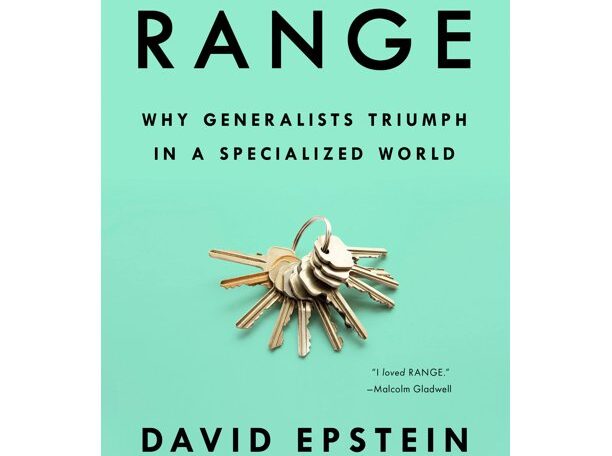
Title: Range – Why Generalists Triumph in a Specialized World
Author: David Epstein
Images: Freepik, Stock, Unsplash.
Review: Rogério H. Jönck
![[Experience Club] US [Experience Club] US](https://experienceclubus.com/wp-content/uploads/2021/03/laksdh.png)










![[Experience Club] US [Experience Club] US](https://experienceclubus.com/wp-content/uploads/2021/03/logos_EXP_US-3.png)


